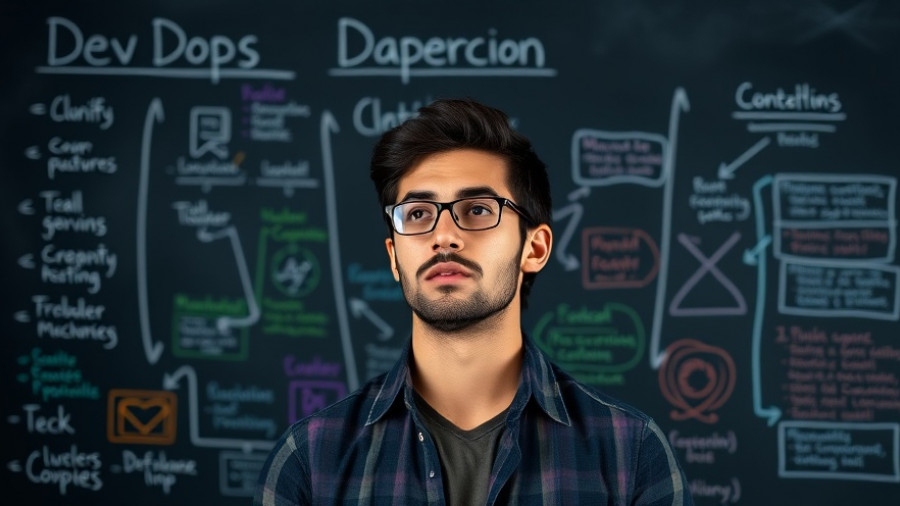
Understanding the Critical Need for AI Accuracy
As businesses and individuals increasingly rely on artificial intelligence (AI) to make important decisions, the accuracy of these systems becomes paramount. In a lighthearted but poignant discussion on AI, the importance of ensuring that solutions offered by AI are reliable and sound is emphasized. The problem is evident—AI can deliver confident responses that are, at times, completely off base, leading to potentially disastrous outcomes. To mitigate the risks associated with AI inaccuracies, certain techniques can be employed to enhance the dependability of these systems.
In How to Make AI More Accurate: Top Techniques for Reliable Results, the discussion dives into AI's accuracy challenges, exploring key insights that sparked deeper analysis on our end.
Techniques to Improve AI Accuracy
In the video How to Make AI More Accurate: Top Techniques for Reliable Results, several techniques were outlined that can effectively improve AI accuracy, which we examine below:
1. Retrieval Augmented Generation (RAG)
One major technique discussed is Retrieval Augmented Generation (RAG). This method integrates a reliable data source into AI responses, ensuring that AIs refer to accurate, updated information. Instead of relying solely on the training data, RAG utilizes a vector database to pull relevant documents that inform the AI's output. By augmenting the conversation with external, trustworthy information, RAG addresses the issue of AI 'hallucinations,' whereby the model generates responses that seem plausible but are incorrect.
2. Choosing the Right Model
The size and training of the AI model can also significantly affect accuracy. The video highlighted the importance of selecting an AI model that fits the user’s requirements—whether they require a broad knowledge base or specific insights. For instance, when addressing a cybersecurity issue, a specialized model would provide more accurate solutions than a general-purpose model that may have only broad knowledge in the domain.
3. Chain of Thought Prompting (COT)
When faced with complex problems that require logical reasoning, Chain of Thought Prompting (COT) can be a vital tool. This method encourages AI to produce intermediate reasoning steps before arriving at a conclusion. By walking through problems step-by-step, similar to how students are taught to show their work in mathematics, AIs can arrive at more accurate answers and reduce the chances of logical missteps.
4. LLM Chaining and Mixture of Experts (MoE)
The video also explored LLM chaining, where multiple AI models provide insights on a single query, ensuring a consensus opinion that can enhance accuracy. In a similar vein, the Mixture of Experts (MoE) technique uses different specialized sub-models to tackle specific aspects of a problem. Important questions might leverage different 'expert' modules to gather diverse inputs, ultimately improving the quality and accuracy of the final response.
5. Adjusting Temperature Settings and Reinforcement Learning
Another key point raised was the model's temperature setting, which influences the creativity versus predictability of AI responses. Distinct temperatures produce either rigidly factual answers or more creative output, which is essential when the user's goals differ. Moreover, reinforcement learning with human feedback allows for continuous tuning of AI systems to align better with user expectations, enhancing overall reliability.
The Path Forward for AI in Africa
For African business owners and policymakers, enhancing the accuracy of AI is not just about technology—it’s also rooted in effective governance and policies. As AI continues to shape economies globally, ensuring that systems are designed effectively and utilized responsibly will be crucial. Implementing robust AI policy and governance frameworks will allow leaders to guide the development of AI towards providing accurate, useful outcomes while safeguarding against pitfalls.
Conclusion: Making AI Work for Africa
Improving AI accuracy is a multi-faceted challenge that necessitates innovative approaches and responsible governance. As technology evolves, business owners and community members must stay informed about these developments. By actively engaging in AI policy discussions and advocating for accurate AI applications, Africa can harness the full potential of this transformative technology.
 Add Row
Add Row  Add
Add 




Write A Comment